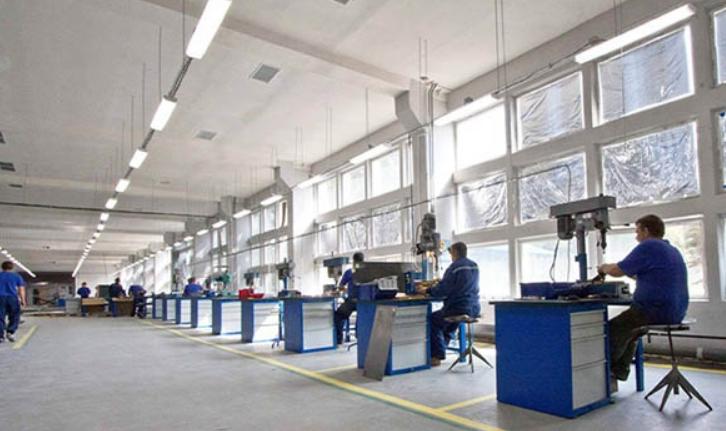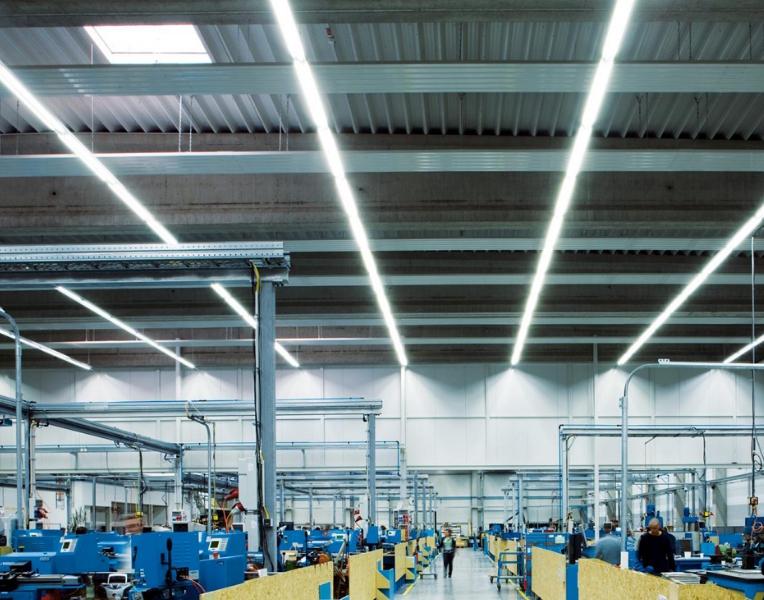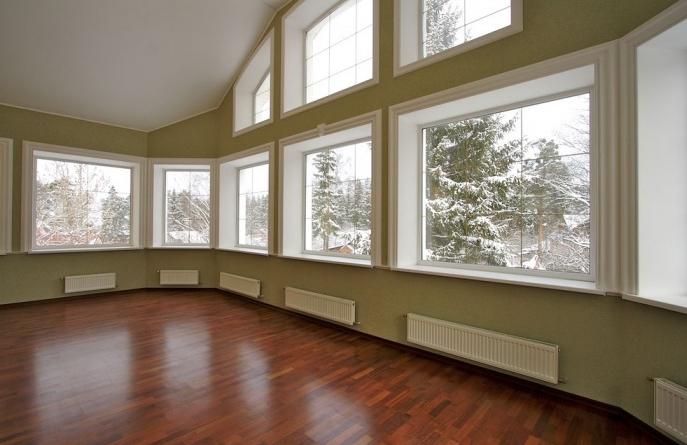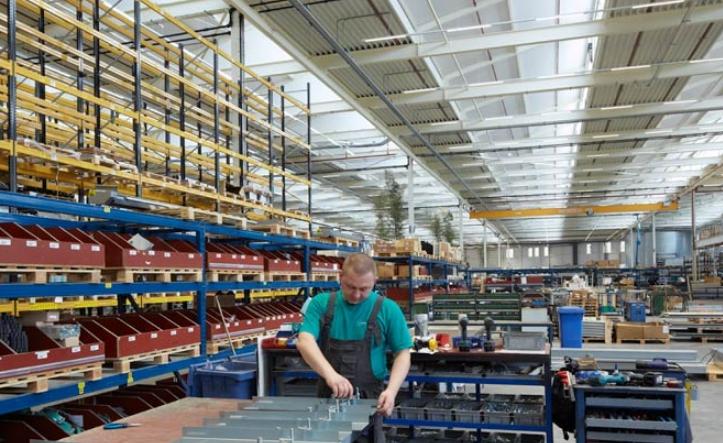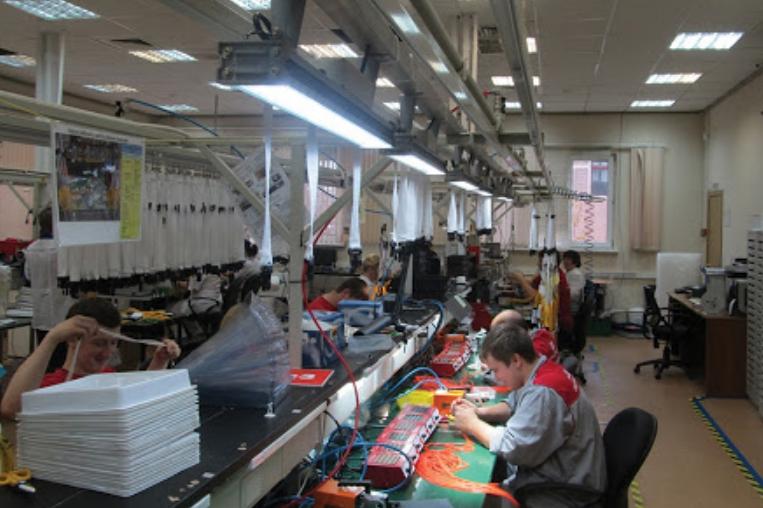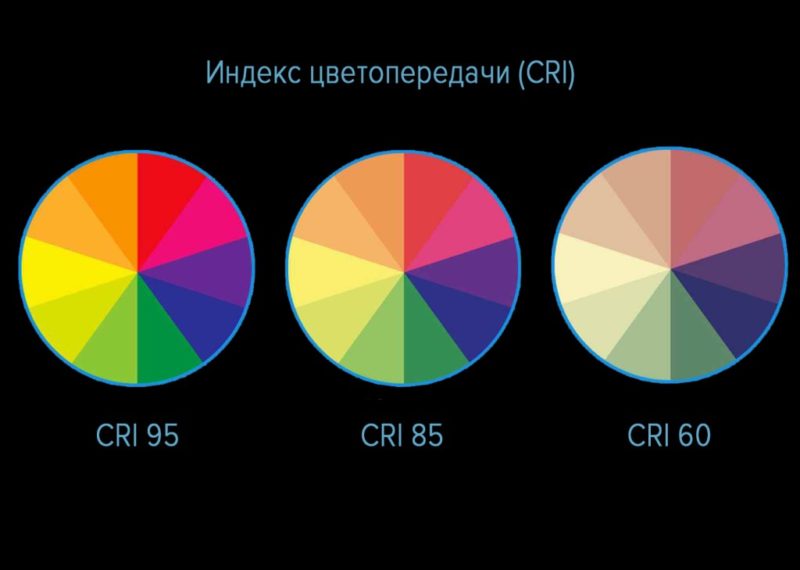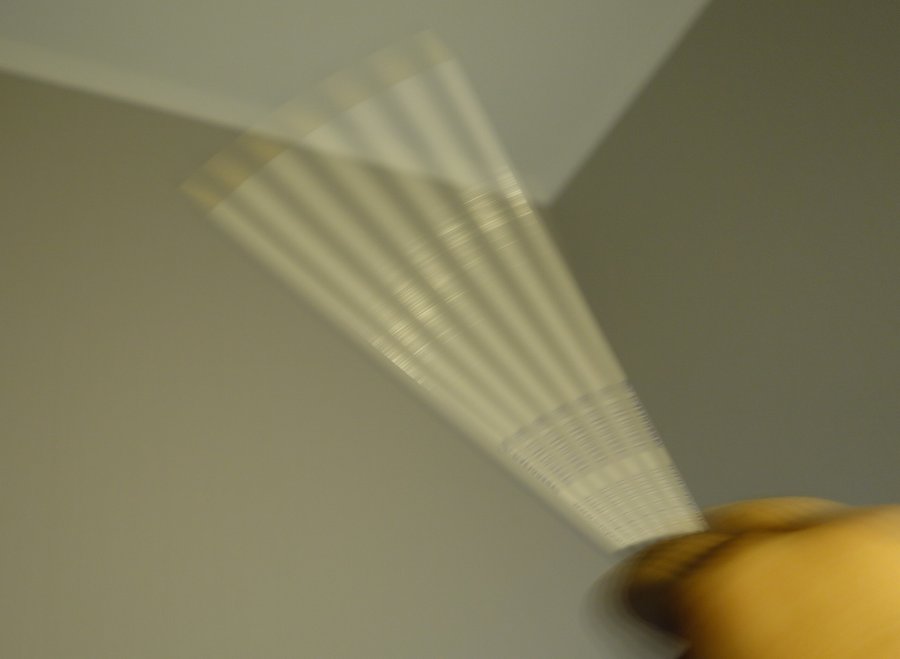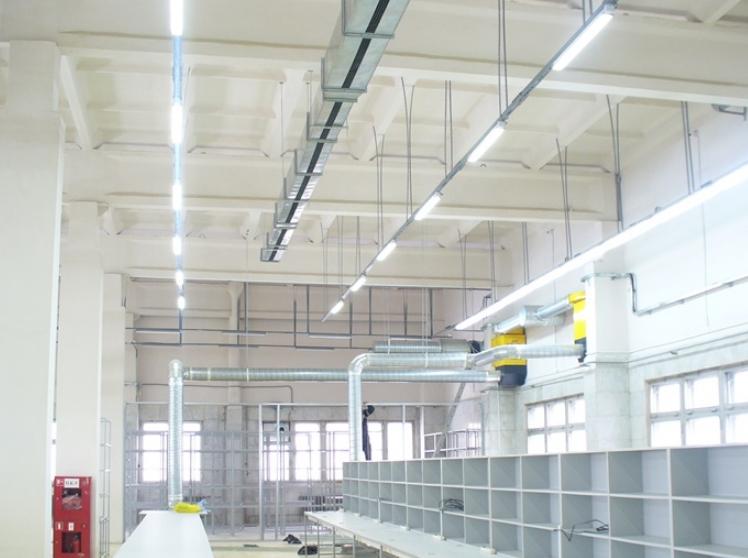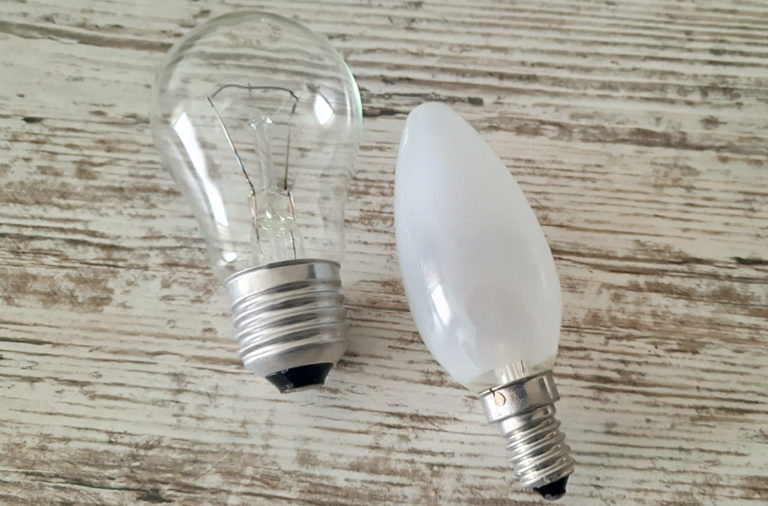Types of industrial lighting and its standards
Lighting industrial plants must comply with a number of regulations. They are different for each industry, as working conditions vary depending on the work performed by man. The requirements for industrial lighting are much stricter than for domestic lighting and any violations result in fines or even a ban on work until the problems are corrected.

Features of industrial lighting
It is worth breaking down the peculiarities of industrial lighting to understand its differences from other types and know the requirements that must be respected. The main varieties are as follows:
- Natural. The most preferred option, giving good light output and comfortable for vision. In such conditions, the eyes are the least tired, but to provide good natural light for all workers is problematic, requires the installation of large sized windows or the construction of skylights. These are called elements with two rows of windows to improve illumination.Natural light is best for all types of production work.
- Artificial. Used wherever it is not possible to provide natural light. It is implemented in different ways, as there are many light sources and each has its own characteristics, determining the scope of application. When using artificial lighting, the norms established for a particular production area are taken into account. Electricity consumption should not be overlooked, as when Energy-saving lamps energy-saving lamps can also save money.
- Combined or mixed. Used most often, as it provides the right level of illumination and at the same time saves electricity. It so happens that most of the day you can use natural light, and include artificial light at dusk, and on days with heavy cloudiness. Here it is necessary to make a system with adjustable intensity of artificial light, because it can also work as the main light, which will require an increase in brightness.
The main requirement in the planning and selection of industrial lighting is practicality, appearance is not particularly important.
General information
All types of lighting in production must meet a number of general requirements that are unchangeable. This simplifies the selection and provides clear guidelines for selecting those solutions that provide the right performance:
- Lighting levels are determined depending on the requirements for a particular production. List the exact data makes no sense, because the list is very large, all information of interest can be found in GOST R 55710-2013, GOST R 56852-2016, SNiP 23-05-95 and SP 52.13330.2011. There may be additional requirements that are in the industry documentation, their compliance is also mandatory.To ensure optimal working conditions it is necessary to comply with a number of regulations.
- A number of production activities require an increase in lighting standards by 1 step. This applies to the food industry and businesses where clear visibility and color rendering are important. It may be necessary to improve lighting in industries where eyesight needs to be strained most of the time. Another option is if most of the employees in the facility are over 40 years old.
- The quality of lighting must be constant throughout working hours. It is important to ensure constant values, so depending on the time of day and the weather outside, there should be different modes of use for the luminaires. If they work the same way all the time, energy costs will increase many times over. This factor depends on natural light, without it there is no point in adjusting the artificial light.
- Must comply with all safety standards established for a particular area of production. It all depends on what equipment is installed, whether there is a risk of damage to the lines, etc. This aspect is usually supervised by the safety department specialists, who also set the necessary standards.
- The use and adjustment of light fixtures should not be difficult for employees. Switches should be placed in easily accessible locations so that the power supply can be turned off quickly. It is worth providing a stock of replacement bulbs so that if a light element fails, it can be quickly replaced to ensure normal working conditions.Maintenance should not be a problem.
- If the workplace requires high-quality lighting, use additional lights to highlight a desk or other object. Use either fixed lamps or adjustable plafonds, which is much more convenient if you need to periodically shift the light accents.
You can not violate the norms in the direction of lowering, as well as in the direction of exceeding. High brightness can provoke eye strain and premature fatigue.
Types of lighting used in plant halls
It all depends on the type of lighting. You can distinguish several categories. Each has its own characteristics, which should be taken into account in the planning and installation of equipment.
Natural
This lighting in the shop or on the production site is the most preferred. It will give a clear color rendering, will allow to work with minimal strain on the eyesight. Suitable for buildings of small size, the best quality of light is provided if the windows are located on the south side. It is important to use blinds on the windows to adjust the brightness of the light if necessary, especially during periods when the sun is shining directly into the windows. The main types are these:
- Lateral one-way lighting is most common. This option is suitable for most buildings, the level of illumination depends on the size of the windows, they are often made in the whole wall. But here we must take into account that the larger the openings, the higher the heat loss in winter, which increases heating costs.The more windows - the better the natural lighting.
- Option with the placement of windows on two sides is suitable for large rooms where one-sided light is not enough or there is a possibility to provide natural light from the opposite and adjacent to each other walls.
- Overhead lighting is arranged due to openings in the roof or a special design, which is called a lantern. This solution occurs less frequently due to the complexity of arrangement and the high cost of installing windows or modernization of the roof. Good for small buildings and large industrial modules with an area of several thousand square meters (in this case, most often a lantern is made along the entire building).In many modern halls the ceiling openings occupy a large part of the surface.
- The combination option combines overhead as well as sidelight, so in certain conditions it can provide a good result. Often used for buildings of large width, where the light from the windows almost does not reach the center. Designs come in a variety of forms, almost always developed individually, taking into account lighting standards and the peculiarities of the production process.
By the way! Natural light can be both direct and reflected. The second option is much more complicated, as it is required to use a system of reflectors, which will provide evenly scattered lighting.
To improve performance, you need not only to think about the location and area of the windows, but also Choose a suitable color for walls and other surfaces. The lighter they are, the greater the reflection coefficient, which is very important.
Artificial
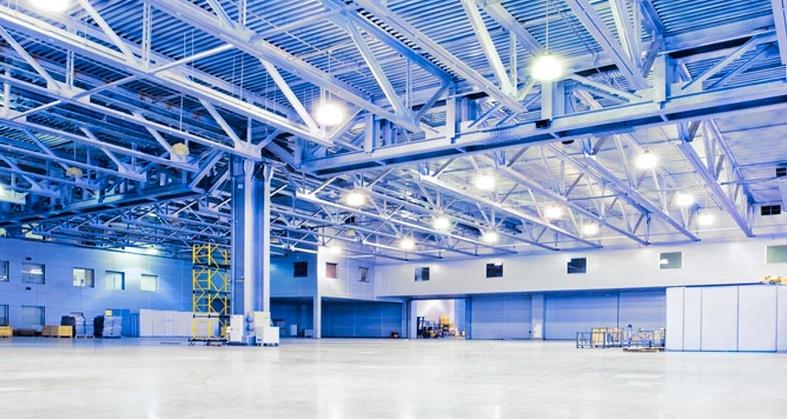
Lighting standards of industrial premises are set mainly for this option. With its help, it is not difficult to achieve any result, because here you do not need to increase the windows, just install additional lighting fixtures or place them correctly. The main varieties:
- Work lighting - the main type, which should provide optimal conditions for workers to perform their duties. It is also needed for the comfortable movement of people and the passage of transport inside the premises. Used during working hours, it can be both general and local. For special lighting conditions additional lights with adjustable brightness are used.
- Safety lighting is necessary for industries where stopping work could be hazardous or when power outage needs time to turn off equipment. Allows you not to stop work if there is a power outage. Most often used in pumping stations, communication nodes, boiler rooms, sewage systems, etc.
- Evacuation lights turn on when there is a power outage and help employees leave the building safely. It is most often used in equipment shops, where movement without light can be hazardous. Also make emergency lights mandatory in rooms without natural light, on stairwells, if the building is more than 6 floors high or if there may be more than 50 people there at the same time. It is necessary to put this option in rooms with more than 100 employees.Evacuation lighting must ensure the safe evacuation of employees when necessary.
- Security lighting is needed after hours and will provide good visibility both in corridors and passageways of the building as well as along the perimeter of the grounds and along building facades. Can operate continuously at 10% of full power or turn on when a motion sensor or other security system is triggered. Can be separate or combined with other options.Security lighting must provide the right level of security for the facility.
- Duty lighting Typically turned on after hours if there are employees on night shift duty. It is needed to provide visibility in passageways, corridors, stairwells, and other places where people are only occasionally present. The main purpose - to ensure minimum visibility, no standards on this issue has been established.An example of duty lighting through the main LED lights, set to 5% power.
Depending on the distribution of artificial light, it can be divided into these types:
- General lighting is located under the roof of the room, it should provide a comfortable background and distributed evenly. Usually specific standards are determined by SanPin, which sets the values for different industries. Location is selected individually and depends on the type of lamps and their power.If general lighting is sufficient, there is no point in using additional lighting.
- Local lighting is used for specific areas or areas that require better light. With its help, you can adjust the values where it is necessary.Local lighting emphasizes the workspace.
- Combination solutions allow you to combine different options or modes to use them as needed. Modern systems can have different configurations, which allows for any lighting mode.
It is best to ration the system in advance and coordinate it with supervisory authorities to avoid problems.
Combined lighting
This variety combines natural and artificial light and allows for optimal performance with minimal energy consumption. More often than not, conditions are uneven during the day or time of year, as light values depend on many factors - cloud cover, sunrise and sunset times. Natural light is planned for the fact that it may not provide the right values.
Lamps and fixtures are placed in the same way as without natural light, because most often you need to work in periods when there is no sun. It is important to provide several modes in order to adjust the equipment depending on external conditions.
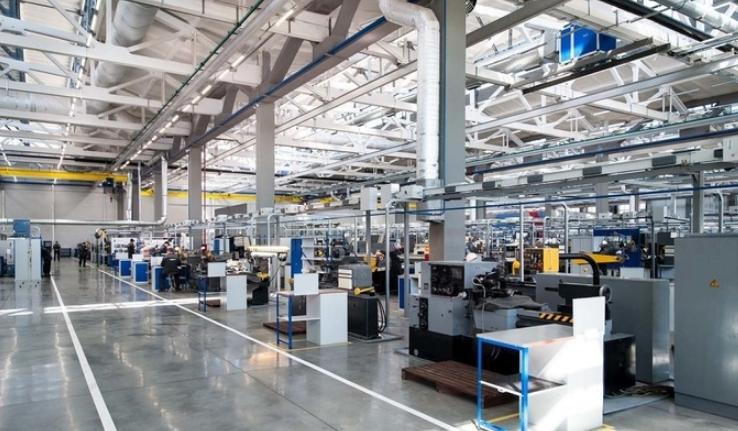
If there are tall buildings or large trees with dense crowns nearby, natural light will be much lower. It is better not to plant anything next to it.
Requirements and regulations
All regulations can be clarified in SNiP 23-05-95, if the company is equipped according to European standards, you can use EN 12464-1. There are many indicators, they may differ depending on the industry, but the main ones are as follows:
- Illuminance. Measured in lux and calculated on the basis of the amount of light per square meter of area. For standard production halls a value of 200 lux is enough, while for high-precision production facilities the norms can be as high as 5000 lux. In this case it is important to take into account the coefficient of natural illumination and contrast - there should not be a strong difference between the working area and the surrounding space. On critical areas a number of additional criteria are also taken into account.
- Color temperature indicates brightness, it depends on creating a comfortable microclimate and providing the right level of concentration. If natural color rendering is most important, then it is worth choosing options with a temperature of 5500 to 6000 K (Kelvin). Luminaires with a warm spectrum create a calm environment, but can have a bad effect on performance. Cool light stimulates better work performance, while constantly being in a brightly lit room can provoke stress.Color temperature and application area.
- Color rendering index is taken into account wherever natural color rendering is to be ensured. Average values (measured in Ra) for most industries are 50 to 60. However, industry standards may have other values, much higher. The maximum value is 100 and corresponds to natural light.Example CRI
- Flicker of light is measured in Hertz. If the value is less than 300 Hz, human vision perceives a change in intensity, such conditions create discomfort and eyesight fatigue faster. Therefore, when choosing lighting fixtures, you need to pay attention to this indicator. The least flicker is produced by LED lights, which ensured their popularity.Pencil test in the presence of a flicker lamp.
- The glare reading says, creates discomfort for vision due to direct or reflected radiation. This effect is observed in places where high precision work is required.
- The uniformity of illumination shows what variations there are depending on the position. The more precise the production, the higher the requirements for this figure. Usually the exact numbers are set by industry documents, as they vary greatly from one area to another.
- Energy efficiency of electricity use for lighting. While in incandescent lamps most of the energy goes to heat radiation, which increases the cost of light, in modern models the figures are much higher.
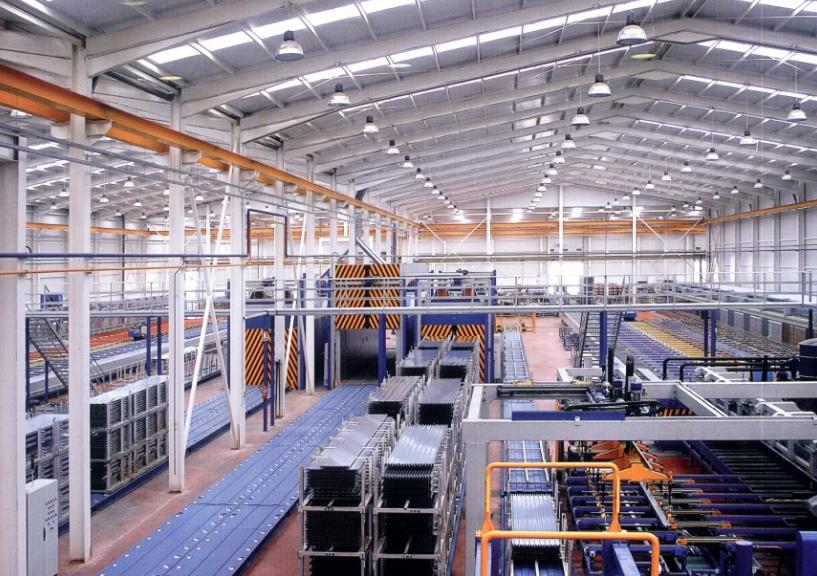
Illuminance values are measured in strictly defined locations. For large production facilities without special requirements for light quality, this is done in the furthest away from the windows at one meter from the wall on the floor or approximately in the middle if the windows are on both sides. For high-precision operations, the value should be measured at the level of the work surface.
Type of bulbs, shape and size of fixtures
It is necessary to choose and type of lamps, there are several types, each has its own characteristics, which are worth considering:
- Incandescent bulbs Operate due to the incandescence of the tungsten filament. Because of this, electricity is spent inefficiently, most of it goes to heating and thermal radiation. At the same time the brightness of light elements is the lowest of all, and the lifetime of only 1000 hours. They give a yellow light, which will not provide a comfortable environment for high-precision work.
- Halogen lamps - an improved version with a filament and gas pumped into the bulb. They have twice the lifespan and higher quality of light, but it is better not to use this solution because of the strong heating of the surface and unnecessary consumption of electricity.
- Fluorescent products shine brightly, but they do not provide good light rendering. Lamps flicker during operation, which provokes visual fatigue during long work. Another disadvantage is the mercury vapor inside the bulb, if damaged, it poses a danger to humans and the environment. Fluorescent light is not suitable for shops with rotating machinery, as it provokes a stroboscopic effect.
- LED luminaires give a smooth light of any brightness, it can be adjusted by using a dimmer. Diodes do not flicker, so the vision is less tired, life - 50,000 hours, many times more than any other option. For long life, it is necessary to put a reliable voltage regulator.LED lighting provides excellent light quality with low power consumption.
- Sodium lamps are 4 times more efficient than LED, but are more suitable for outdoor and warehouse use because the light is yellow and the color rendering is low.
It is not forbidden to use different lamps, as long as they give a good effect.
Fixtures should be selected for the room and take into account how they will be used, it is worth remembering a few tips:
- For general lighting of a large shop or production area, it is better to take rectangular or square models. The power and location are chosen according to the requirements that must be met. Mounted on the ceiling and on cables, if the ceiling overlap is high.
- To highlight a small working area, use round or oval shaped lamps that can be adjusted. You can put narrow and long LED models that can illuminate a table or other space well.
In conclusion, a video lecture on the topic: industrial lighting.
When selecting industrial lighting should study the requirements of GOST, SNIP and industry documents. Based on them, make a calculation of the number and type of fixtures and a project indicating their location.
